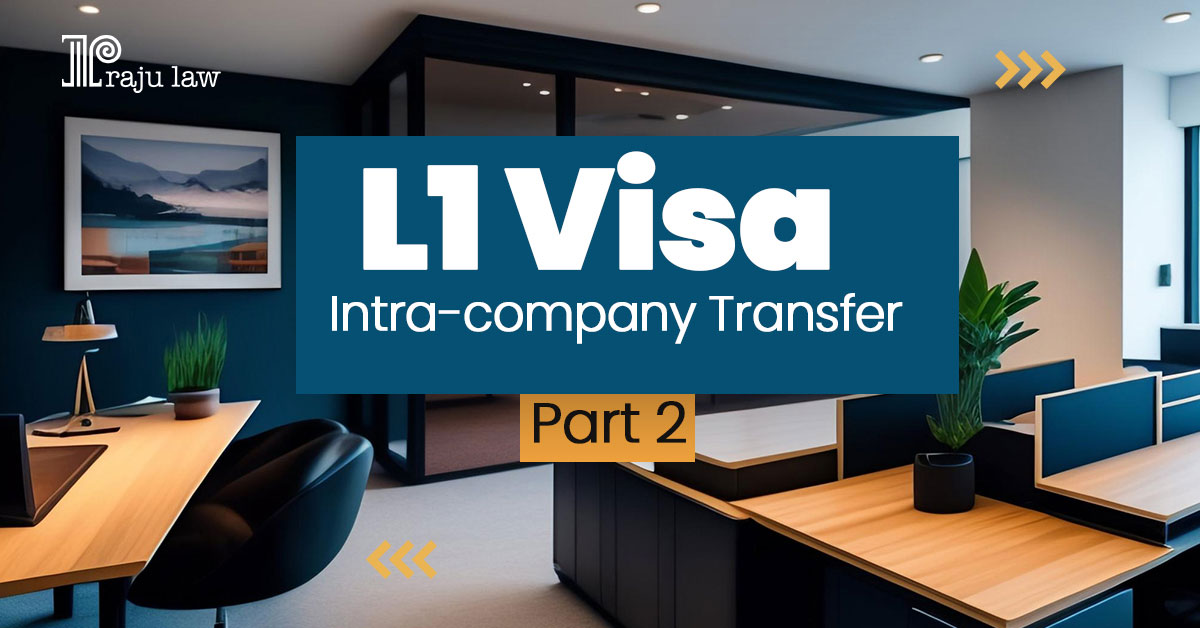Read part one here
Application Process
The L1 visa process is quite different from the H-1B visa application process. Whereas H-1B visa applicants need to go through the US Labor Department, have prevailing wage certifications, and prove that no available US workers can fulfill the job position, L1 visa applicants do not need these. Read more on the differences between L1 and H1b visas.
So to apply for the L1 visa, you will need to go through the following steps:
- Getting a transfer offer: The applicant must receive an intracompany transfer offer from their employer for a managerial, executive, or specialized knowledge position in the US.
- Filing Form I-129: Employers are responsible for filing either an individual or blanket petition (based on eligibility) with the US Citizenship and Immigration Services (USCIS). For individual petitions, the employer must submit Form I-129 along with the L Supplement. In the case of L1 Blanket Petitions, the employer files Form I-129S.
- Completing Form DS-160: The applicant needs to complete Form DS-160 online to provide information regarding their intent to travel to the US.
- Paying the L1 visa application fee: The applicant must pay the $205 L1 visa application fee and any additional fees based on their home country or reciprocity measures.
- Scheduling the L1 visa interview: Applicants between the ages of 13 and 79 need to schedule an interview at the US Embassy.
- Submitting L1 visa documents: The applicant is required to gather the necessary documents for their application, including a valid passport, photograph, DS-160 confirmation page, fee receipts, visa interview appointment letter, and other specific documents depending on whether they have individual or blanket petitions.
- Attending the interview: The applicant should attend an interview at the US Embassy, during which officials will ask questions to assess their eligibility and intentions.
- L-1A Visa Interview Questions: Interview questions focus on the applicant’s job position, managerial or executive role, and eligibility for the L-1A visa.
- L-1B Visa Interview Questions: Questions during the interview pertain to the applicant’s specialized knowledge, the importance of their knowledge to the company, and their place of work.
- Following a successful interview, the applicant will wait for visa processing and, if approved, send their passport for stamping.
Visa Processing Time
The L1 visa does not take too long to process. Individual petitions however, take a bit longer than blanket petitions, but the reduction in time is very small. In general, an L1 visa is processed for around 3 to 4 months from the time the application was submitted.
Since there is an option for premium processing, employers who pay it can get the answer to whether their petition is approved or denied in 1 to 3 weeks.
Visa Validity
When an employer files Form I-129, they also determine the length of the contract, which subsequently dictates the duration an individual can work in the US upon L1 visa approval. The specified time frame is also indicated on the Form I-94 issued upon entry to the US.
There exists a maximum allowable duration for L1 visa holders, contingent on the specific visa type. For L1A visa holders, the maximum permitted stay in the US is 7 years, while L1B visa holders can stay for up to 5 years. Upon reaching this maximum limit, individuals may explore alternative immigration options that could potentially lead to permanent residency in the US.
Extension of Visa
As the expiration date approaches, the employer has the option to request an extension, allowing the individual to prolong their stay in the US.
For L1A visa holders, if the extension requirements are met, USCIS grants an additional 2 years of L1A visa status. Two such extensions are allowed, enabling a total extension of stay in the US for up to 4 years. Consequently, the maximum duration one can stay in the US with an L1A visa is 7 years.
In the case of L1B visa holders, the employer can apply for an extension only once, resulting in an additional 2-year validity for the L-1B visa. Therefore, the overall maximum validity period for this visa is 5 years.
L1 Visa Dependents
L1 visa holders are allowed to have their dependents accompany them to the US where they are working. Dependents include the spouse and unmarried children under 21 years old. These dependents must get an L2 visa to be allowed to into the US to join the person with the L1 visa.
The L2 visa allows dependents to get a driver’s license, open a bank account, as well as engage in activities such as enrolling in a university to get a degree, as well as get employment by obtaining an Employment Authorization Document (EAD).
Conclusion
The L1 Visa serves as a valuable option for foreign employees and their families seeking opportunities to work and live in the United States within the framework of their parent company’s international operations.




